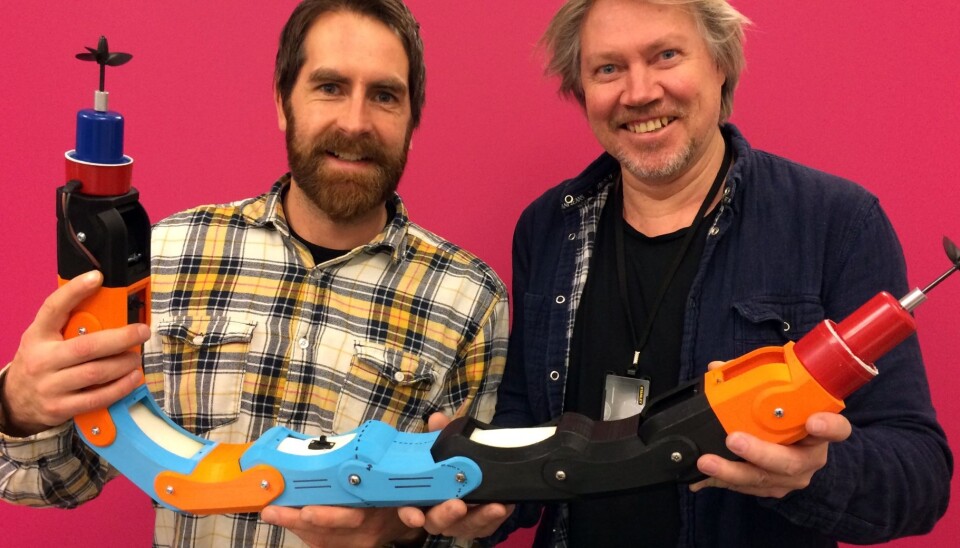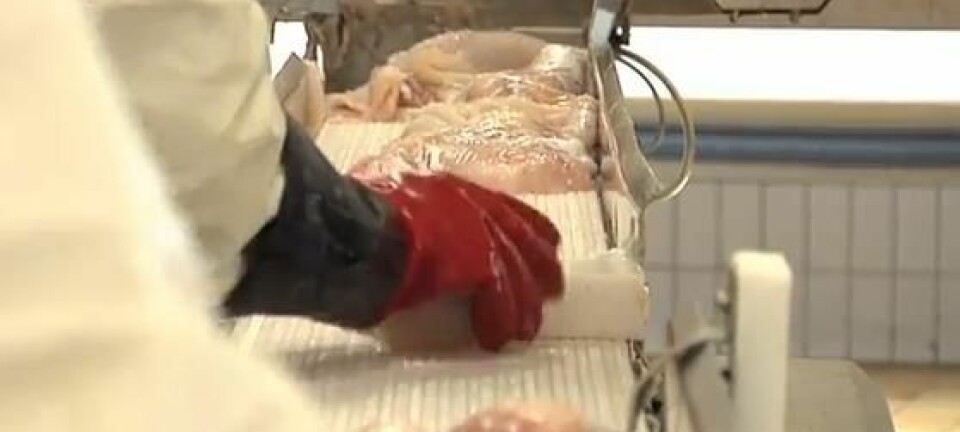An article from Norwegian SciTech News at SINTEF

Robot water pipe inspectors
Norwegian researchers and a small company in Tromsø are taking part in a project aimed at preventing between 30 and 50 per cent of Europe’s drinking water being lost due to pipe leakages.
Denne artikkelen er over ti år gammel og kan inneholde utdatert informasjon.
The company Breivoll Inspection Technologies has only five employees. Nevertheless, it is working closely with Norwegian municipalities and research centres both in Norway and overseas. The reason for the company’s success is its advanced application of ultrasound.
Together with Det Norske Veritas, it has developed an inspection methodology for water distribution grids. A long, torpedo-like and propeller-driven robot is guided through the water and district heating pipe systems. It is equipped with 64 large ultrasound transducers which transmit and receive ultrasound signals. It collects data which enable them to calculate the thickness of, and levels of corrosion in, the pipes.
Last year, the company was incorporated into the EU project called TRACT. In collaboration with SINTEF and Spanish and Italian research partners, the EU intends to develop an inspection robot for different types of pipes, including branched pipe systems, with the aim of taking measurements without having to shut down water supplies.
Unique
“What we’re doing here is quite unique”, says Gorm Johansen at SINTEF ICT. Johansen, together with the industrial design firm Inventas, is responsible for the development and mechanical design of the robot.
“The inspection units we use today are large and long”, he says. “We are now producing a unit that can be sent through pipes as narrow as 10 centimetres in diameter. We’ll be able to send a controlled robot 150 metres into the pipe. It will also be able to tackle junctions at angles of up to 90 degrees. In order to reduce the amount of rust particles entering the water, the unit must have only minimal contact with the pipe walls. This means that it must be smaller than today’s robots and contain fewer transducers. It must also be more flexible and pliant”, says Johansen.
Johansen says that many current inspection units are driven by wheels or belts, which cause contaminant particles to be shed from the bottom of the pipes. Instead of wheels, the new system uses propellers installed at the front and rear of the unit and spring-loaded fins which are in contact with the pipe wall.
Rigid and locked, but flexible too
Inventas has divided the project into several parts. It has built a 3D-print model which has been tested in a pipe filled with water.
Johansen shows us a video that demonstrates how the little robot moves through the pipe and, on encountering a junction, “sniffs around” for a moment before twisting and continuing along the correct path.
The ultrasound signals hit the pipe’s metal walls, and the wall thickness is computed from the returning signals. To carry out measurements along an entire pipe length, it is essential that the robot can rotate. Inventas solves this by locking the joints at each end of the unit.
Progress
“Inspections of this kind are among the most difficult operations we have to carry out in the water distribution sector”, says Lars Brenna at Breivoll. “But we expect that the concept being developed today will be able to resolve some of the problems we have yet to tackle”, he says. “In Norway, poor quality water pipes are responsible for drinking water losses of between 30 and 40 per cent, so it’s essential that we come up with innovative solutions. Since this problem is also universal, Breivoll as a company is also aiming to develop a global market for the TRACT concept”, says Brenna.
Project TRACT was launched last December and will be completed next year.
“We’re well underway”, says Johansen. “It sounds almost crazy to develop an industrial pilot aimed at resolving such major problems, and with partners from all over Europe, in the space of just two years. But such craziness also leads to progress”, he concludes.

































